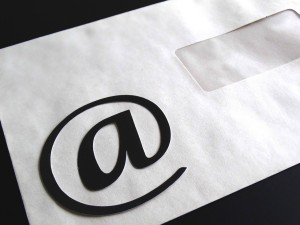Please note that in March 2019 MailChimp made some changes to its terminology and ‘lists’ are now ‘audiences’, some screenshots in this blog post may not now be relevant.
We all know how important it is to use a combination of tools when building our marketing strategy, and one that you will hear lots of talk about is email marketing and the importance of building your list.There are so many different options for doing this, and you need to find the one that works best for you, I love Mailchimp so this post is all about helping you understand the different aspects of Mailchimp and providing you with a few tips to get started.
Terminology
When you first log into Mailchimp (after signing up), you will see five options in the menu at the top.
Campaigns – this is where you go create an email to send out to your list
Templates – here you create templates to use in your campaigns
Lists – these are where all the details of those who have signed up are, and where you configure your sign up forms
Reports – where you go to check the stats for your campaigns
Automation – the place to set up autoresponder emails for your lists – note this is a paid feature
As well as these menu item terms, here are two other Mailchimp terms that you will find useful:
Groups – these allow you to categorise your subscribers by their interests
Segments – this is the specific group you will be sending your current campaign to
My Mailchimp Tips
So now you understand the terminology, what are the top five things you should do when you first sign up for a Mailchimp account:
1. Configure your list – brand it, add some text to the sign up form, decide what you want to know about those who are signing up, and always ensure you have a clear explanation as to why they are receiving emails from you. All this is done in the ‘Signup Forms – general forms’ menu in Mailchimp.
2. Decide if you want to group your subscribers – for example by sector, and ensure you add a question to identify the group they will fall into to your sign up form.
3. Create a template – you don’t need to add content but go into the template section and create a new one – play around with the colours, logos and layout to get just the feel you want for your brand. By having a branded template set up, all you then need to do is add the content for each campaign.
4. Integrate your list with your website and social media so that people can sign up to it.
5. Import any contacts you already have permission to contact into Mailchimp
Get started…
Send out your first campaign, it only has to be a short welcome email but start using Mailchimp. Look at the reports to see how many people have opened your email, check for any email addresses that bounce and always make sure that you are only contacting people you have permission to contact.
I hope that this has given a brief introduction to setting up Mailchimp, I am in the process of putting together a guide to using Mailchimp for all my subscribers, so if you don’t already receive my newsletter please do sign up so that you can ensure you receive this.
If you have any burning Mailchimp related questions please ask them below as I’d be happy to help you.



